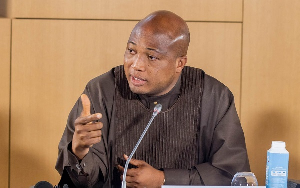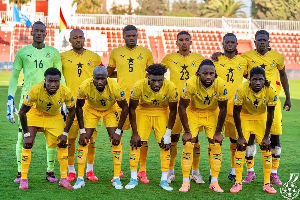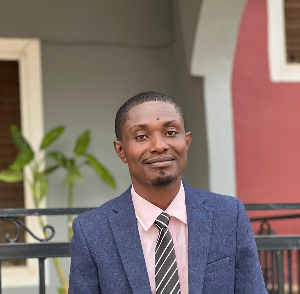I was driving around with my friend on Saturday, May 22, 2021 evening when we saw a fireball coming out of Nyiragongo,” recalls 24-year-old Ranjit Mangat, a resident of Goma city in North Kivu, eastern Democratic Republic of Congo.
“It was 7 o’clock in the evening and at first we thought that a fire had broken out in one of the villages on the slopes of the mountain. Then we noticed that the volcano had erupted and people were running in panic everywhere trying to find safety.”
Lava flowed out of one of the fissures on the slopes of the mountain, followed by an eruption, sending a red ball of fire into the skies, say residents of 17 villages that were destroyed in the disaster.
Since that evening of May 22, the residents of Goma and the neighbouring Rubavu District in Rwanda and surrounding areas have not known peace, as the eruption and aftershocks gave way to seismic tremors that brought down many buildings and left huge cracks on others, and even blocked roads and the Goma airport.
The volcano, 10km from Goma city, spewed lava, killing at least 32 people and leaving thousands homeless. Thousands fled the area but some have started returning, despite caution by local authorities that another major eruption could rock the area anytime soon – and without warning.
Goma is a lakeside city with about 2 million people.
The tremors have also been felt more than 90km away in the Rwandan capital, Kigali.
On Saturday night, Ranjit said he did not sleep a wink. And neither did his father, Bantu Singh Mangat, and the rest of the people in the city.
The Mangats, who have relatives in Kenya, live in a brick house in the picturesque shores of Lake Kivu, where former president, the late Mobutu Sese Seko, once lived. Today, it also hosts UN staff and peacekeepers.
The senior Mangat, Bantu, was here when the deadly 2002 eruption happened, killing at least 250 people and displacing thousands others. Unlike last Saturday, in 2002, he did not wait: he immediately left for Kigali in neighbouring Rwanda with his young family, when tragedy struck.
Bantu has lived in Goma all his life. Indeed, his parents are buried there and he says he is not leaving the country, unless things get worse.
Where would he pass anyway? The road out of the city has been damaged and, even if he were to leave, because of COVID-19, crossing the border is a huge challenge.
When The EastAfrican spoke with the young Mangat on the phone on Wednesday, tremors were still rattling the region. In the background, we could hear people shrieking.
“l have to call you back. It’s another earthquake happening now,” said a panicky Mr Mangat before he hung up.
As a safety measure, the Mangats erected a tent in their garden, which they would move into if there is a real danger. During the 2002 eruption, lava swept through Goma city but in last week’s incident, it stopped just outside the central business district.
The EastAfrican again spoke with Ranjit later on Wednesday night.
“I’ve seen dead people,” he said. “People who live near the mountain have died from breathing toxic fumes of gases. They are turning grey with red boils on their skins. And there are so many lost children everywhere.”
The UN staff have left, Ranjit said.
“There’s no help coming. People don’t know what to do because no one is giving us any information,” he said.
But on Thursday, at around 3am, Ranjit received a disturbing text message from North Kivu military governor Constant Ndima: “Presence of magma under Goma Urban Area with an extension under Lake Kivu. At present, an eruption on land or under lake could come with little or no precursors. Everyone must leave Goma.”
Alarm
“Goma is in big danger. Scientists predict there will be eruption in the earth or under the lake, so evacuation is taking place immediately,” Ranjit told The EastAfrican on phone. The Mangats, fourth generation East African Indians with family in Kenya and Uganda, joined thousands of residents who trooped out towards Mushaki on the hills on the western side.
Akili Mali, a journalist who also witnessed the 2002 eruption, said the rebel movement RCD (Rassemblement Congolais pour la Democratie), which controls this part of the country, sounded the alarm. “We had an old man at home. It was very difficult, but we managed to escape,” Akili Mali told The EastAfrican, adding that the recent eruption brought back bad memories from 2002.
“There were no telephones to use to ask for help. Many people died and children got lost,” he recalled.
Nzamukunda Dativa from Kanyanja village at the foot of the mountain, said she was making dinner for her family at around 6pm on the fateful Saturday when she heard screams. She went out to check what the fuss was about, only to see that the mountain had turned crimson, with plumes of fire and smoke billowing out of the crater.
“Lava was flowing towards our village, I couldn’t believe my eyes; everyone was scampering, so I left everything and ran to save my life and my unborn baby,” she said.
Nzamukunda is seven months pregnant with her third baby. At one time as she shuffled along, she fell down and was almost trampled by fleeing villagers, she said.
“I fell down in the stampede, but I had to get up and run. I was supported by two men who were also fleeing. I am recovering from the injuries I sustained,” she said.
“My house survived by a whisker,” she added. “Lava flowed right past it, but my neighbours were not as lucky, as their houses were razed. My husband and I and our children are just lucky to be alive.”
For Claudine Francoise, the escape from her village was more dramatic. Her home too is at the foot of the mountain and she said she saw lava chasing her.
“I was washing clothes at home when it started. I saw it flowing right behind me. It was the scariest sight of my life,” she said. “I didn’t take anything from the house, I just ran. Even those who carried things had to drop them when they saw the lava closing in on them.”
Although Kasereka Mahinda, director of the Goma Volcanological Observatory, says “the scale is gradually decreasing and the spectrum of danger tends to recede,” those who stayed behind in Goma are living in fear.
Uncertainty
No one – even experts – is 100 percent sure about what might happen. The May 22 eruption caught the experts unaware, so Nyiragongo may not have spat out its last lava. Last Monday alone, 119 tremors swept through the city of Goma, with the strongest having a 5.3 magnitude felt all the way to Kigali, according to Rwandan seismic monitors.
“The post-eruption tremors are a result of tectonic plates and rocks realigning themselves inside the volcano, falling into spaces left by the magma,” explained Dr Havugimana Emmanuel, a senior geography lecturer at the University of Rwanda.
Experts say volcanic tremors usually precede an eruption, but this time they happened simultaneously and after the eruption, which points to a possibility of another eruption soon.
More than 200 houses suffered cracks while some storey buildings collapsed, injuring people.
Information from Volcanodiscovery.com, an online platform of experts that monitors volcano activity and shares information, noted that, “The seismic network detected continuous volcanic tremor between, indicating magma moving upwards through the volcanic conduits. This may be a typical sign for an upcoming eruption”.
“It is hoped that these reflect internal readjustments after the dike and the connected reservoir that had caused the eruption had been emptied. A more concerning prospect would be if the tremors are being caused by magma movements underground, something that cannot be ruled out.”
Some people died of asphyxiation as they attempted to cross barely cooled lava that had cut through their neighbourhood 13km north of Goma.
By the time of the eruption, the Goma Volcano Observatory could not even take the basic checks, as the World Bank cut its $2 million funding over corruption allegations. With their coffers empty, the team could not even afford Internet connection to run remote sensors and fuel to transport researchers to the volcano.
The residents were left to their own devices. Barbara Bitton, strategic response manager for the charity Mercy Corps, says there is fear everywhere.
“Families are scrambling to get out of Goma any way they can. Over 600,000 people are already on the road with little or no belongings and another 1.5 million live in Goma but are not yet under an evacuation order. Tremors are happening every 15 to 20 minutes,” she said.
“As of Thursday, there have been over 300 aftershocks up to 5.2 on the Richter scale. Many buildings have collapsed due to poor quality construction. The sky is dark, as an ash cloud has covered the city. Layers of carbon dioxide and methane gas are trapped at the bottom of Lake Kivu following the eruption. The emission of poisonous gas due to volcanic activity cannot be ruled out. This is an incredibly worrying scenario.”
The Congolese government said it was planning to evacuate all the residents of Goma to other towns.
“According to scientists, Goma is still under a persistent threat of eruption and repeated earthquakes. This requires the government to pre-emptively activate a gradual evacuation plan of residents as soon as possible, until the threat is over,” said Government Spokesman Patrick Muyaya.
Officials say the safest route is through Rutshuru to Butembo, Beni or Kanyabayonga in the Virunga, where humanitarian aid is available. The other route is through Sake to Masisi.
As the Goma population starts shifting, a humanitarian crisis is building up, with fears of a new explosion of Covid-19 as crowds scramble for the available boat or bus rides out of town, into camps.
‘Volcano refugees’
Some of the volcano refugees have crossed into the Rwandan District of Rubavu, in Busesamana Sector in the west, where they are hosted in churches and tented camps.
But Rwanda has not been spared the devastation of the Nyiragongo fury. At least 40 buildings and a road have been reported damaged in Rubavu. Three-to five-hectares of crops, mainly beans, sweet potatoes and bananas, were destroyed by cooling lava on Sunday after the eruption.
A long fissure has destroyed houses, shops and a road to the Congo border from Rubavu town. The fissure is said to be part of a big developing underground rift. The situation has caused the local government to relocate residents and public services, including medical services at the Rubavu District Hospital. MTN service centres and banking services, including Bank of Kigali, have had to close.
Some Rubavu residents opted to migrate to Kigali while others abandoned their homes. While the full extent of the eruption and earthquakes is yet to be determined, at least 32 people were confirmed dead and about 170 children were reported missing.
Unicef has established centres for unaccompanied children.
According to the UNHCR, Rwanda received between 7,000 and 8,000 refugees when the volcano erupted, but some of them turned back on Sunday morning. But as seismic tremors became stronger, more Congolese fled Goma. UNHCR reported 400 new arrivals in Rubavu between last Tuesday morning and Wednesday.
Elise Vilechalane, Head of Communications at UNHCR, told The EastAfrican last Wednesday that the UN in partnership with Rwandan authorities has provided the refugees with food and other basics.
Preparations
“We have established a camp and provided the basics. Rwanda already had a contingency plan in place,” Ms Vilechalane said.
Rwandan Minister for Local Government Jean Marie Vianey Gatabazi told the media that the government, with UNHCR and other partners, were prepared to accommodate and cater for the arriving refugees. The UNHCR is also planning to distribute face masks to the refugees, in addition to handwashing facilities to minimise Covid-19 infections.
The Congolese government dispatched a delegation of seven ministers to see how people affected by the volcano could be assisted. Without electricity and drinking water, the inhabitants of Goma are exposed to another danger: The water from Lake Kivu is risky to use due to poisonous gases and other impurities.
Getting aid to Goma is also a challenge, as a 1,700-metre stretch of the road to the city was covered with lava. About 200 trucks laden with goods last week remained stranded in Rutshuru city, some 70km from Goma. The United Nations Mission for the Stabilisation of the Congo continues to monitor the developments “closely,” as civil and military engineers inspected the disaster-affected area to assess the extent of the damage.
Congolese ministers Nicolas Kazadi (Finance) and José Mpanda (Scientific Research) have promised funding for the observatory to make it functional.
But there is a silver lining for hotel operators in some areas. The EastAfrican has learnt that Serena Rubavu and Kigali were fully booked by Congolese who have fled the Goma ticking bomb.
Africa News of Wednesday, 2 June 2021
Source: theeastafrican.co.ke













